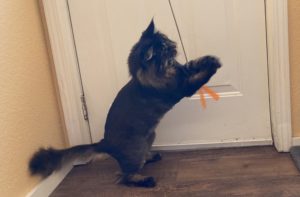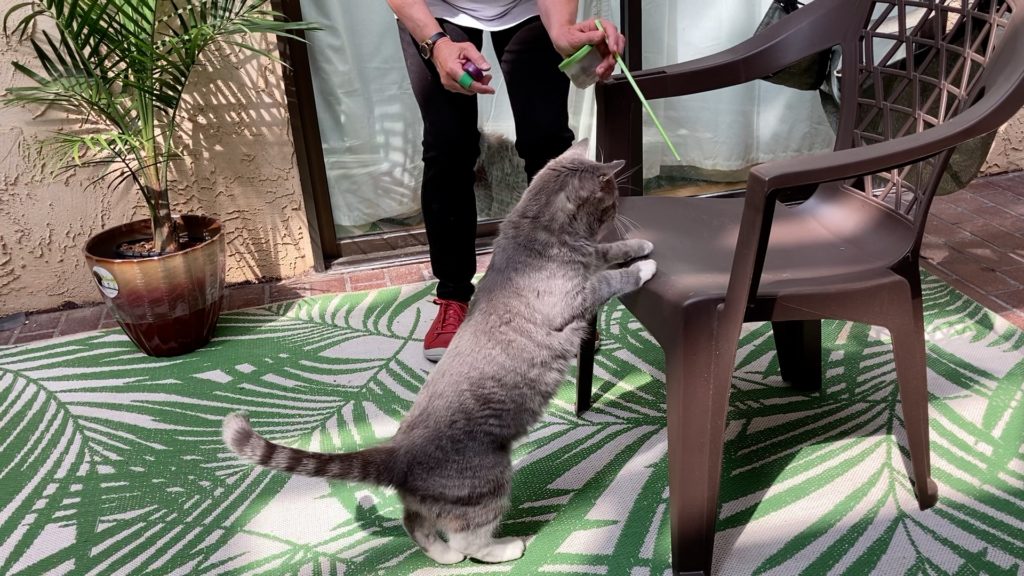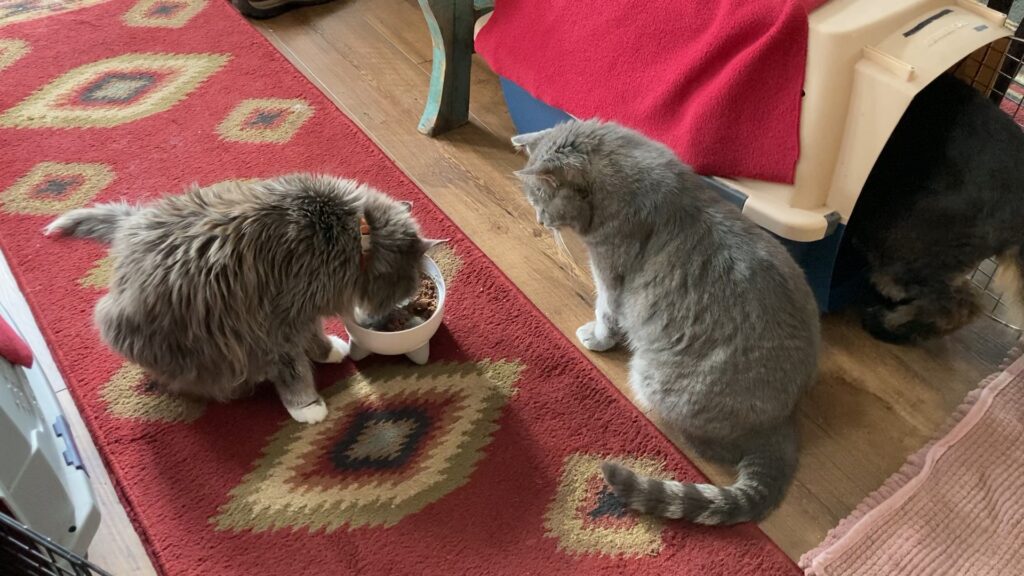
Solitary hunters, cats will eat or cache their prey after a successful hunt. Mother cats will bring prey back to their kittens to teach them how to hunt and what to eat but cats typically DO NOT SHARE their prey. They will growl when eating to warn other cats off.
In photos taken on the “cat islands” of Japan (called neko shima), cats line up at dishes of food put out by the island residents. There are 11 islands in Japan that have more cats than people on them. There are not enough mice for the cats to eat so residents of the islands provide food for the cats. Feeding times appear to go smoothly on the cat islands with the occasional spat between cats. The island residents do put out food in more than one location so a cat can always move to another feeding station if he gets into a fight over food. Contrast this with our picture of a wild cat, a solitary hunter, munching his mouse in solitude.
Our indoor cats don’t have the option of leaving if they are the target of food aggression. Although cats may appear to get along eating next to another cat or out of the same bowl, cat behavior experts recommend that we separate cats when feeding, preferably out of sight of other cats. (Reference 1)
Why separate cats when feeding?
- Cats with more dominant personalities will nose smaller, more timid cats out of the food bowl.
- Victim cats may gorge and eat their food quickly, leading to “scarf and barf”.
- Victim cats may start to lose weight.
- House-soiling issues can start if the “bully” decides the game should extend to resources other than the food bowl.
These behaviors can be subtle. The “thief “at first just sits quietly near the “target” cat and stares at her. The target may stop eating. There may be some fisticuffs as the target tries to keep eating. Eventually the thief just noses the target out of the bowl, and the target cat leaves.
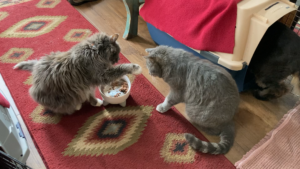
Strategies to separate cats when feeding
Assign each cat his own food station out of sight of the other cats. If you are meal feeding, you can fill each station with a cat’s portion and call each cat to his station as you place them around the house. Collect the feeders in 15-30 minutes as the cats finish their meals. If you like, you can offer the meals in food puzzles, one per cat.
Locations of feeding stations
You may be able to take advantage of your cat’s preferences when deciding where to locate her feeding station. Some cats like to be up high and can be fed on their cat tree or tops of shelving units.
Closets can also make good feeding stations. Cats who like to be up high can eat on the top shelf and may just need a step ladder, storage cubes that form a ladder, or a single pole cat tree to get up there. If you just need to keep the family dog out, a gadget called a “Door Buddy” can work.
Baby gates can be used to block off doors to closets or rooms to separate cats. Although an agile, determined cat can easily scale a baby gate, this is usually pretty difficult for a dog.
feeding stations
Microchip Feeders
If you are dealing with cats on different diets or cats that eat slowly or “graze”, microchip feeders such as the SureFeed Microchip Pet Feeder are worth the cost. These feeders will only open for the cat or cats they are programmed for.
Enclosures for Feeding
A “Meow Space” is a deluxe feeding enclosure. It is ventilated and has a locking pet door which can be accessed by microchip or collar tag. Like a microchip feeder, the “Meow Space” will only open for the cat or cats it is programmed for.
A plastic pet carrier can make a great “kitty diner”. Each cat can eat in his own carrier. If one cat finishes before another, the gate can be closed until the slower eater is done. This also helps your cat become more comfortable with his/her carrier.
Tip: Make a carrier cover that will “camouflage” the carrier, matching your color scheme and decor.
not enough room to separate cats when feeding?
Consider feeding social groups together. Cats who belong to the same social group prefer to spend time with each other and are often willing to share resources such as food and litter boxes.
How do you know if cats are affiliated? The following behaviors can help you identify the social groups in your home.
- Sleeping the same room
- Allogrooming (grooming each other)
- Sleeping touching each other
- Touching noses
Note who does what and with whom, then diagram the social groups in your house. You may be able to feed cats in a social group in the same area. It is still recommended for each cat to have a separate bowl, be spaced apart, and to meal feed the kitties.
Separating your cat from other animals while eating allows your cat to feed in the same way as a wild cat. Feeding alone helps avoid behaviors like gorging and vomiting which can affect a cat’s physical and mental health. Although it can be a challenge to separate cats when feeding, attention to each cat’s preferences and identifying the social groups in your home can help you develop a feeding strategy.

references
1. Sadek,T. (chair) “Feline Feeding Programs:Addressing behavioral needs to improve feline health and wellbeing” Journal of Feline Medicine and Surgery (2018) 20, 1049-1055




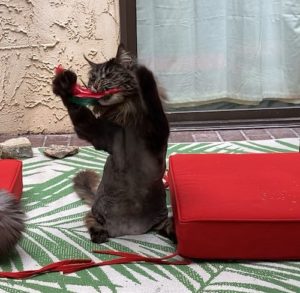
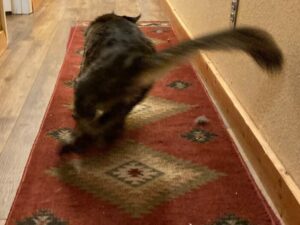
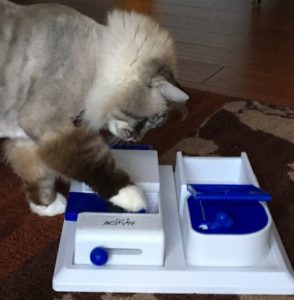
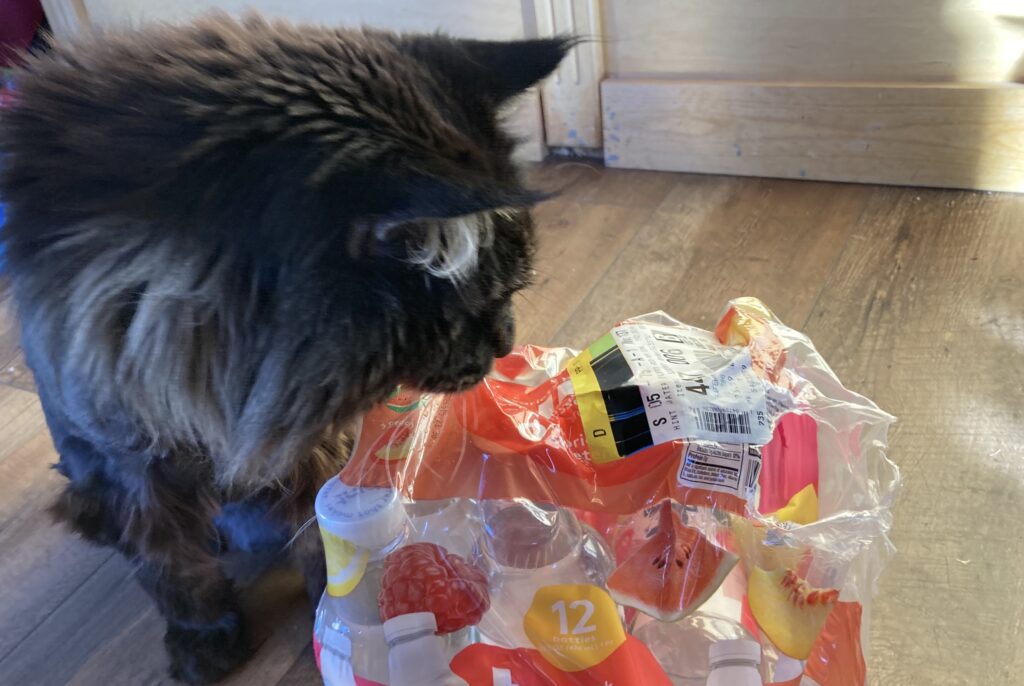 Have you had or do you have a cat who would eat anything – hair ties, ribbons, plastic – in addition to food? Have you experienced the anxiety waiting for your cat to pass whatever object you think he ate? It is not unheard of for cats to eat, chew or suck on non-food items. This behavior is called pica. How do you manage the cat with pica?
Have you had or do you have a cat who would eat anything – hair ties, ribbons, plastic – in addition to food? Have you experienced the anxiety waiting for your cat to pass whatever object you think he ate? It is not unheard of for cats to eat, chew or suck on non-food items. This behavior is called pica. How do you manage the cat with pica? Keeping kitty busy
Keeping kitty busy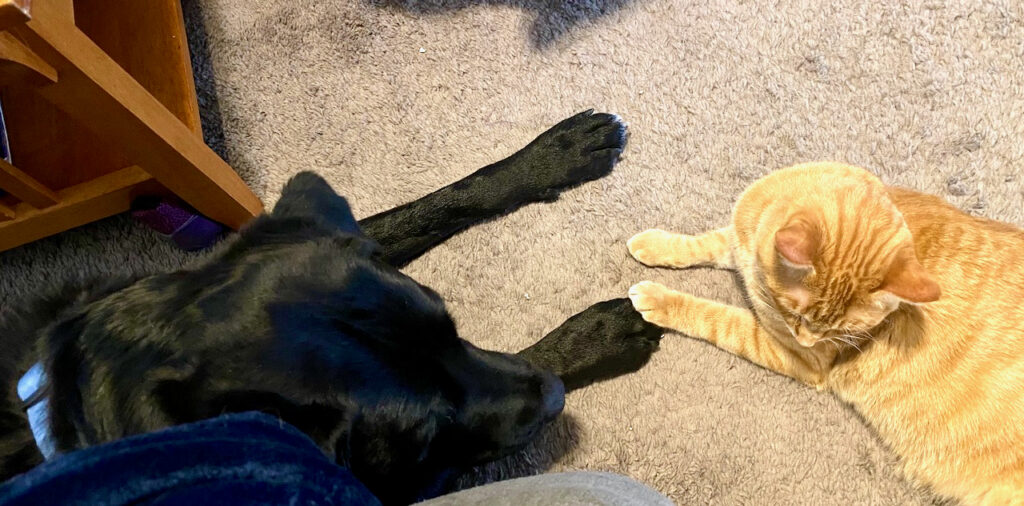 In this post, we look at how cats get along with other species – are their behaviors affiliative or is there conflict?
In this post, we look at how cats get along with other species – are their behaviors affiliative or is there conflict?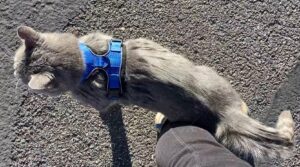 Cats use the same friendly behaviors when interacting with people as they do with other cats.
Cats use the same friendly behaviors when interacting with people as they do with other cats.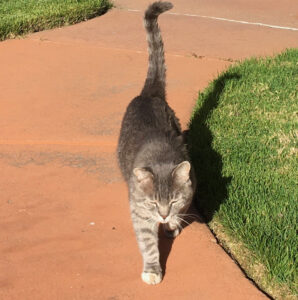 A Tale of Tails
A Tale of Tails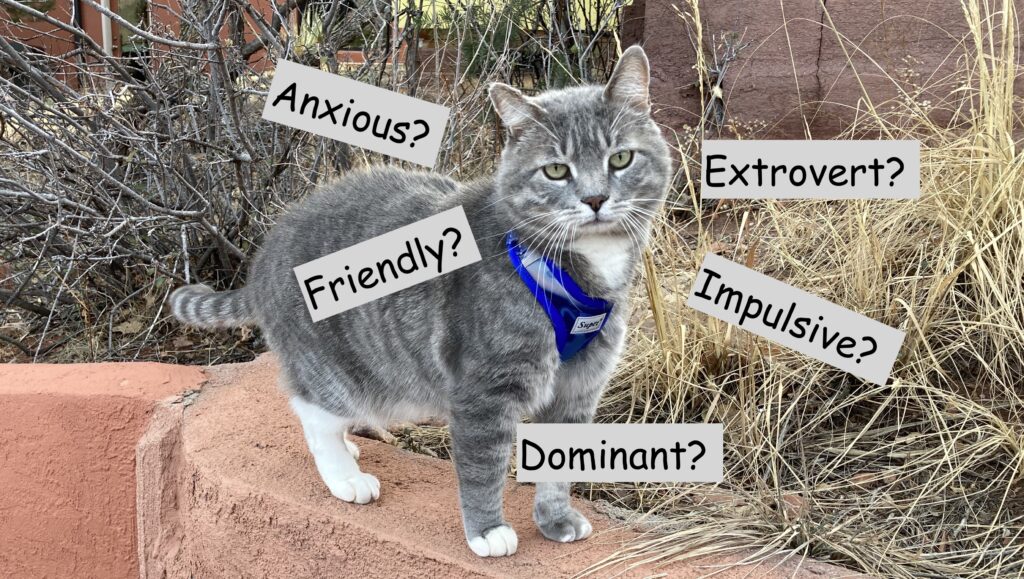 Do cats have personalities? If you
Do cats have personalities? If you 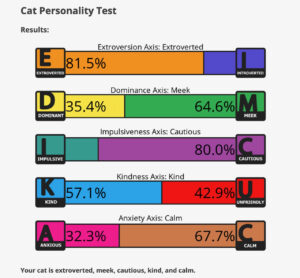





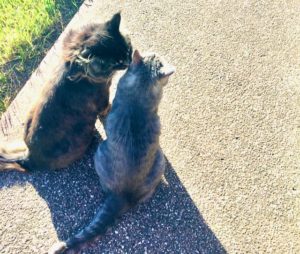
 Cats don’t have to be “preferred associates” to choose a spot in the sun in the same room as a housemate cat. As long as there is plenty of space, peaceful coexistence should be possible.
Cats don’t have to be “preferred associates” to choose a spot in the sun in the same room as a housemate cat. As long as there is plenty of space, peaceful coexistence should be possible.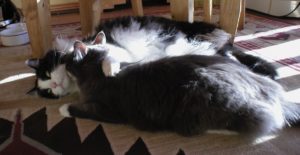
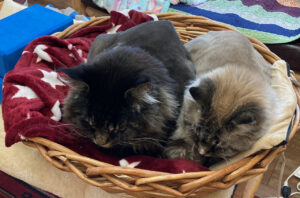
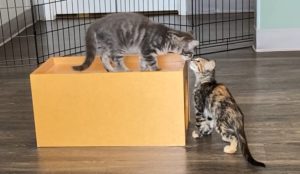
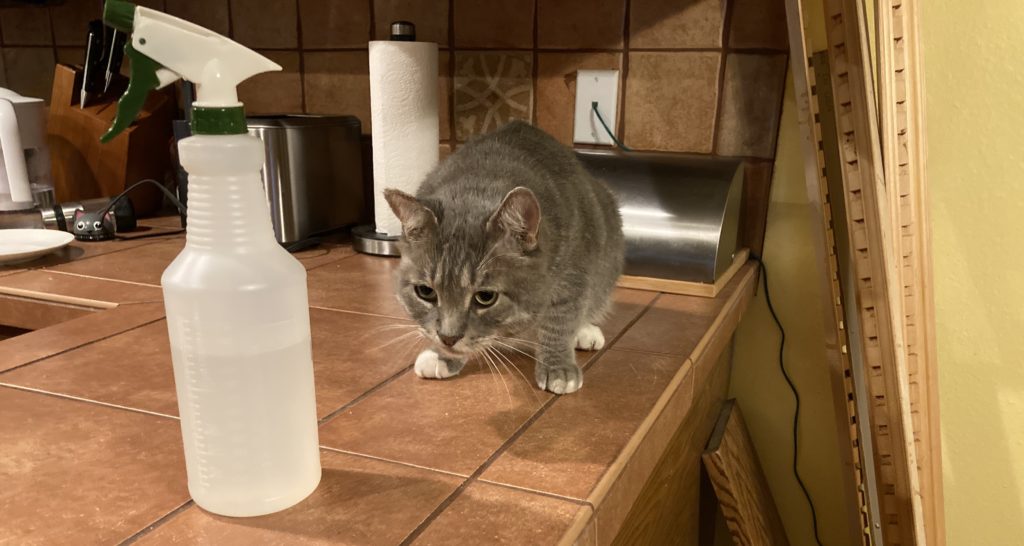 After adopting a feral cat 3 years ago, I am still struggling with cats on the counter. Gus spent most of his wild life dumpster diving, and hunting mice and bugs for food. He certainly would have availed himself of any food a good samaritan left out for the community cats. Understandably, the kitchen counter is a cornucopia of food as far as he is concerned.
After adopting a feral cat 3 years ago, I am still struggling with cats on the counter. Gus spent most of his wild life dumpster diving, and hunting mice and bugs for food. He certainly would have availed himself of any food a good samaritan left out for the community cats. Understandably, the kitchen counter is a cornucopia of food as far as he is concerned. Choose a mat for your cat to sit on.
Choose a mat for your cat to sit on.
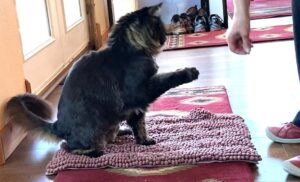
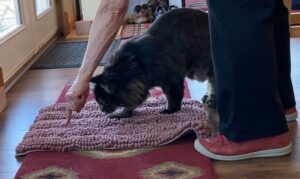
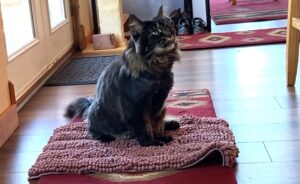 “Shape” the behavior by having her stay on the mat for increasingly longer periods of time.
“Shape” the behavior by having her stay on the mat for increasingly longer periods of time.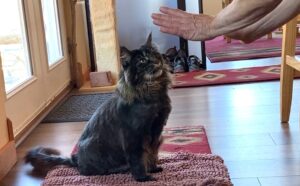 Establish a cue to let her know she can leave the mat.
Establish a cue to let her know she can leave the mat.
